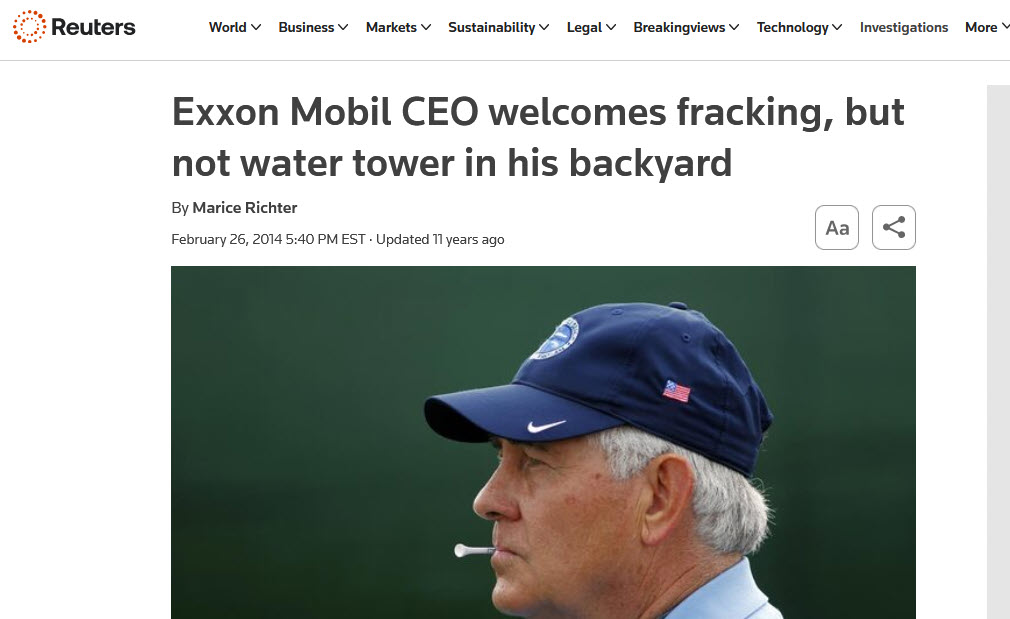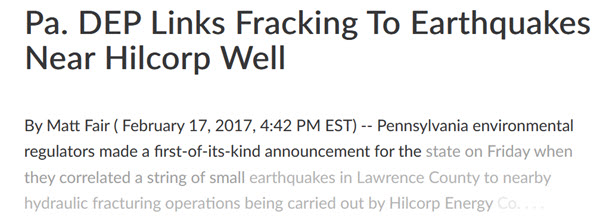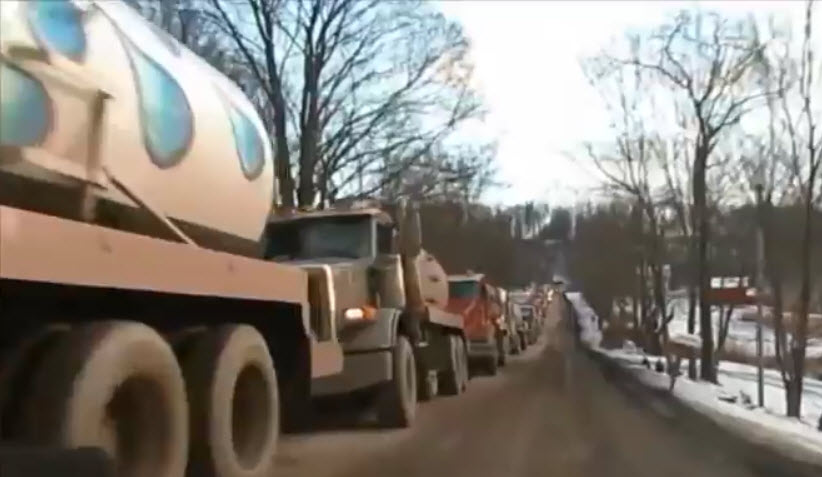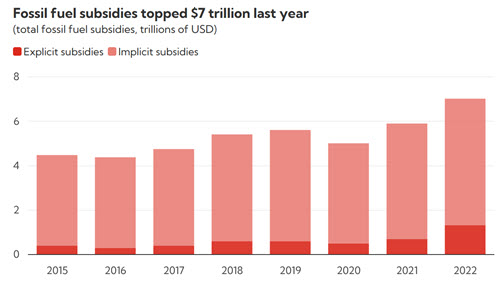FrackingFact.com
Table of Contents (more items will be added soon)
What is Fracking?
Won't Fracking in Maryland Produce Jobs?
Doesn't Fracking Reduce the Cost of Gas for the Consumer?
Why is Western Maryland's Drinking Water at Risk?
Didn't EPA Indicate that Fracking did not Impact Well Water?
How Much Water is Used in Fracking?
What Chemicals are Used, and How Much?
Does Fracking Cause Earthquakes?
Is Fracking Safe from Accidents?
Does Fracking Reduce CO2 Usage or is the Opposite True?
Isn't Climate Change Simply a Normal, Cyclical Event?
Does Fracking Respect a Landowner's Mineral Rights?
Has Fracking Been Associated with Health Issues?
What is Hydraulic Fracturing ("Fracking")?
Here's a 5-minute animation video that explains fracking.

Article explaining fracking by StateImpact, a Pennsylvania NPR collaborative between two stations. Thorough (but brief) article. Includes a link to Explore Shale: which has a very cool interactive page.
Why is Western Maryland's Drinking Water at Risk?
Murphy's law: Accidents happen.
The fracking industry contends that well water is not threatened because the drilling goes below the aquifer despite the reality that the drilling goes through the aquifier. There is also a very real danger in runoff and accidental spillage from the chemicals stored and used at a fracking site. (See What Chemicals are Used in Fracking?)
Fact Sheet 19 - Ground Water and Wells in the Maryland Piedmont - MD Dept. of Natural Resources

How Much Water is Used in Fracking?
In Marcellus Shale sites in WV and PA, the average is 5 million gallons. (Between 2011 and 2013, drillers in Pennsylvania used about 11 billion gallons of water.)
That water is trucked to the site. How many trucks? It depends of course on each truck’s capacity. The short answer: at least 1000 round trips. The long answer: see RESI's report, pages 93-100.) When considering the water issue, remember that the people who live on the small local roads near fracking sites will be exposed to the persistent sounds and smells of these diesel trucks. Also, these small local lanes not designed for the that volume of traffic or persistent heavy loads.
A sidenote: In 2014, Rex Tillerson, former CEO of Exxon, joined a suit to prevent a water tower planned to support fracking from being built near his house. According to Reuters, "The suit, filed in Denton County District Court, also noted that the tower could encourage the town of Bartonville to sell "water to oil and gas explorers for fracking shale formations leading to traffic with heavy trucks... creating a noise nuisance and traffic hazards." (italics mine)

Water used in fracking is combined with chemicals and sand to make the hydraulic fracturing fluid, and under pressure, is injected into the well. What happens to the water after the fracking occurs? It depends. After the fracking procedure is completed and pressure is released, the direction reverses. The flowback must be stored on-site before treatment, recycling, or disposal.

Why are Chemicals Used? What Types, and How Much?
Chemicals are used to reduce friction; biocides to prevent microorganism growth...
The fracking industry, in explaining the fracking process, will mention that chemicals are used, but they don't emphasize the quantity or type. They primarily emphasize that water and sand are used to do the fracking.
... “The number of chemical additives used in a typical fracture treatment depends on the conditions of the specific well being fractured. A typical fracture treatment will use very low concentrations of between 3 and 12 additive chemicals, depending on the characteristics of the water and the shale formation being fractured.”
"Very low concentrations" doesn’t sound so bad.
But do the math. 0.5% of 5 million gallons of water means 25,000 gallons of chemicals In another site, 2% is mentioned, which translates to 125,000 gallons of chemicals. ...pumped into the well under pressure.
What chemicals? “…additive chemicals” According to the EPA's briefing, Dec. 13, 2106 "Some chemicals in the hydraulic fracturing water cycle are known to be hazardous to human health. Of the 1,606 chemicals, 173 had chronic oral toxicity values..."
(See Chemicals Used in Pennsylvania)
Just a few from the list, in case you didn't click the link: Trimethylbenzene, Aromatic Ketones, Petroleum Naptha, Toluene, Xylene...) If you are curious about the potential hazards that these chemicals raise, here is link to the CDC's Pocket Guide to Hazardous Chemicals." Enter the chemical name, and the site returns a page of information.
In Pennsylvania and West Virginia, the reuse of produced water is common in the fracking industry. When drilling new wells, “we use roughly 30% produced water” mixed with fresh water from the Monongahela River, says Andy Travis, a spokesperson at Northeast Natural Energy, a natural gas producer in Morgantown, West Virginia. (What happens to the 70%?) "One of the biggest concerns is the lack of data on the chemical composition of produced water. ...The combined concentration of radionuclides 226Ra and 228Ra also increases rapidly in the first year after a well is completed,... As researchers investigate alternative ways to treat and use produced water, the fracking industry is urging the EPA to allow more produced water to be discharged to surface water and water treatment facilities." Quotes from the article titled Wastewater from fracking: Growing disposal challenge or untapped resource?
Would you like these chemicals to be added to your water supply?
Does Fracking Cause Earthquakes?
According to industry, fracking does not cause the earthquakes.
According to the U.S. Geological Survey, "...we do know that many earthquakes in Oklahoma have been triggered by wastewater fluid injection.” So not the actual fracking, but a separate part of the process. Maryland's proposed (but rejected) regulations had prohibited the injection of the wastewater, which takes us back to the trucking problem - the waste water has to be taken elsewhere. (Bloomberg)
Closer to home, on February 17, 2017, Pennsylvania's Dept. of Environmental Protection announced a correlation between earthquakes and fracking in Pennsylvania. 
 View Jon Stewart's Disbelief
View Jon Stewart's Disbelief
Does Fracking Reduce CO2 Usage or is the Opposite True?
Some proponents of fracking argue that natural gas serves as a “bridge fuel” that we need to use until we can use renewables more broadly. Burning carbon, whether coal or methane (natural gas), produces carbon dioxide (CO2) and water (H20). CO2 and H20 contribute to trapping heat in the earth’s lower atmosphere, (the “greenhouse effect.”)
Some people argue that burning natural gas is better than burning coal. The problem is, whenever we burn, whatever we burn, we are increasing the amount of CO2 in the atmosphere.
Since industrialization, the concentration of CO2 has risen from about 280 parts per million (ppm) to over 400 ppm due to human activities. Many scientists, climate experts, and progressive national governments agree that 350 ppm is the “safe” level of carbon dioxide.


Methane, the primary component of natural gas, has been identified by the U.S. Environmental Protection Agency as the second-most prevalent greenhouse gas emitted in the United States from human activities.
Check out Bill Nye's video where he explains some basic facts about climate changes.
Isn't Climate Change Simply a Normal, Cyclical Event?
Whether climate change is man made or not is not the issue. More importantly, the question is, what can we do about it?
The two most active farming regions in Maryland will feel the impacts of climate change. The eastern shore is vulnerable to sea level rise, flooding, and sometimes drought, and the north central region to increased precipitation variability.
We need to reduce, as much as we can, the amount of CO2 and methane released into the atmosphere. We need policies that promote the development of sustainable energy. Industry has a vested interest in mainting the status quo - they have a large infrastructure already in place and they have reserves that they are already committed to.
This debate is complex --please learn more and do not simply accept sound bites.
Climate change - natural or not? You decide. Here's a link if you want a much more detailed answer to the question "What if global warming is just a natural cycle?"
Is Fracking Safe from Accidents?
States record fracking industry accidents, but apparently not very accurately. Pennsylvania's Dept. of the Environment (DEP) reported 271; buried in Folders were 1,275 water complaints Pennsylvania Fracking Water Contamination Much Higher Than Reported
After an explosion killed a company employee, the safety manager of Weatherford, Texas-based C&R Downhole Drilling told investigators she was new to the position and did not have any formal training in safety. Investigators believe the employee, Tommy Paxton, 45, and four other men were standing in a "flammable vapor cloud" at the Antero Resources site near West Union, W.Va., in 2013 when a spark triggered the explosion. Jason Means, 37, an employee of Nabors Completion and Production Services, was also killed and three others were injured. U.S. EPA in 1998 exempted oil and gas sites from Clean Air Act risk management regulations based on the belief that oil and gas coming out of the ground is "unlikely to form large vapor clouds."
...A battery-powered headlamp worn by a water truck driver appears to have been enough to set off the flammable hydrocarbons venting out of a "brine" wastewater tank at an EQT Production Co. well in February 2013 in Flemington, W.Va. The driver, 43-year-old Brian Hopkins, was working for Central Environmental Services Inc. (CES). He was blown off the catwalk and killed. The explosion tossed a two-story brine tank 100 feet. Read more...
People who own their farmland should be able to sell their mineral rights
(What about the rights of the people who don’t want to sell their mineral rights?)According to the Susquehanna River Basin Commission, contemporary horizontal fracking techniques can drain gas from 200-400 acres surrounding a single well pad. If a land owner does not want to lease the mineral rights to a fracking company even though his surrounding neighbors have, the natural gas under the land can still be fracked. By the rule of capture, the holdout is generally not entitled to compensation from the collection and sale of the natural gas underneath their property, because it is difficult to prove exactly whose property produced the natural gas.
Another legal tool, called “forced pooling” gives states the right to compel a non-consenting landowner into a mineral rights lease.
Didn't the EPA Study Indicate that Fracking Did Not Impact Well Water?
The executive director of the Maryland Petroleum Council, in his letter printed October 8 in the Sunpaper’s Maryland Voices, wrote “… an EPA study released last year found that ‘fracking has not led to widespread, systemic impacts on drinking water.’”
That statement, frequently quoted by the fracking industry, is almost verbatim from page six in the EPA Executive Study). However, that one sentence doesn’t adequately summarize the lengthy report. Recently there have been numerous reports that that one statement was added just weeks before the 5-year study was released. "In interviews with 19 people familiar with the research, some characterized the '(no) widespread, systemic' language as a 'bizarre conclusion' and 'irresponsible.' Others said they were 'surprised and disappointed' that top EPA officials used the phrase and said they had no idea it would become the headline until it came out." (See EPA's late changes to fracking study...)
Won't Fracking in Maryland Produce Jobs?
Some construction-related jobs will be created, but will they be permanent jobs? In 2015 about 17,000 oil and gas jobs were cut nationwide, according to the US Department of Labor. Fracking has proven to be a boom then bust business. Many industry jobs are not filled by local residents, but rather by experienced workers that travel to location.
According to the Maryland Petroluem Council executive who testified at Garrett County public hearings on August 30, 2016, well site construction is brief, taking maybe 8 to 12 weeks. (He was downplaying any disturbances that will be due to the site construction.) Will these jobs go to the people living in western Maryland, or more likely, go to experienced industry workers who travel to new drilling sites?
At the Annapolis fracking regulations hearing December 20, 2016, the pro-fracking protestors were primarily from the local unions, not the residents of Garrett County. 
Fracking jobs are often hyped. In 2015, Pennsylvania stopped publishing the Marcellus Shale Fast Facts report because it inflated estimates of total jobs impact.
Fracking does create truck driving jobs, (for the short term); meanwhile, the truck-related pollution, noise from a steady stream of trucks braking and grinding gears, and increased accidents will impact residents, farms, and tourists.
In Western Maryland, the two biggest industries are tourism and farming. How many tourism jobs will go away when the tourists stop coming? Does anybody really want to vacation next to an industrial site?
Doesn't Fracking Reduce the Cost of Gas for the Consumer?
Not for the long term. "...US and Canadian oil and gas producers have long coveted exports of LNG as a potential release valve for the domestic oversupply of natural gas..."
Wouldn’t it be more sensible to keep the carbon source underground until we actually need it, instead of shipping it overseas? Who benefits from this exporting? Not the residents throughout Maryland.
What happens when the fracked oil and gas is gone? In Newsweek "Is the U.S. Fracking Boom a Bubble?" (July 11, 2014) the author writes: " ... a shale well has a very limited lifespan, of around seven or eight years on average. Its output plummets drastically after the first three years and then deteriorates steadily thereafter."
Has Fracking Been Associated with Health Issues?
People with asthma who live near bigger or larger numbers of active unconventional natural gas wells operated by the fracking industry in Pennsylvania are 1.5 to four times likelier to have asthma attacks than those who live farther away, new Johns Hopkins Bloomberg School of Public Health research suggests.
The findings, published July 18 in JAMA Internal Medicine, add to a growing body of evidence tying the fracking industry to health concerns. Health officials have been concerned about the effect of this type of drilling on air and water quality, as well as the stress of living near a well where just developing the site of the well can require more than 1,000 truck trips on once-quiet roads. The fracking industry has developed more than 9,000 wells in Pennsylvania in just the past decade. Read more...
Apologies and Thanks
This page contains a lot of technical "stuff" that requires time to digest. Fracking is complicated. A fracked well is nothing like the oil and gas wells of yesteryear. We hope the information and links provided here will enable you to make your own informed decision about fracking.
In advance, thanks for taking the time to explore this issue. And please keep in mind that whenever you search, always consider the source.
Interactive Tools
 As the world struggles to restrict global warming to 1.5 degrees Celsius... subsidies for oil, coal and natural gas are costing ... about two thirds of what they (governments) spend on healthcare (10.9 percent).
As the world struggles to restrict global warming to 1.5 degrees Celsius... subsidies for oil, coal and natural gas are costing ... about two thirds of what they (governments) spend on healthcare (10.9 percent).
![]() fractracker.com indicates wells in a given area.
fractracker.com indicates wells in a given area.
 DrillingMaps.com indicates wells in a given area.
DrillingMaps.com indicates wells in a given area.
 Fraccidents map from Earth Justice
Fraccidents map from Earth Justice
 Select a date range to see the seismic activity in Oklahoma. (Oklahoma began having a significant number of earthquakes in 2009, the same year local oil companies began using fracking...)
Select a date range to see the seismic activity in Oklahoma. (Oklahoma began having a significant number of earthquakes in 2009, the same year local oil companies began using fracking...)